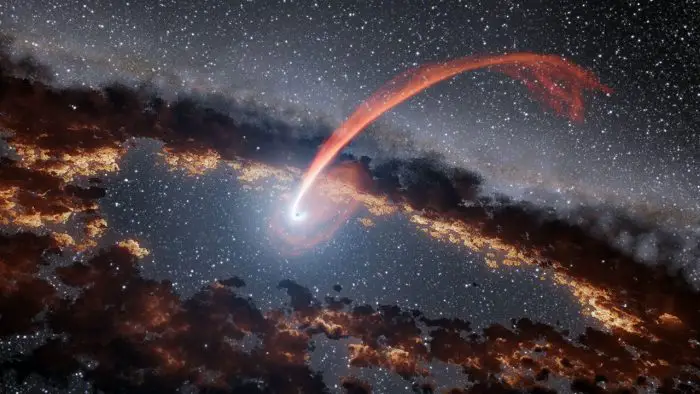It is true that a star can turn into a planet, but the star has to be a brown dwarf. There are multiple different types of star, all having different properties, but in order for a star to become a planet, it would have to have been a brown dwarf star.
Brown dwarfs are stars?
Normally, stars are considered stars because they have enough mass to ignite nuclear fusion, causing the light emissions and the classic appearance that we are accustomed to for a star. But a brown dwarf is still classed as a star, even though it does not carry out nuclear fusion.
Many scientists will refuse to accept brown dwarfs as stars, simply because they do not have the same properties as other regular stars. This is a valid point, but here is where it gets complicated…

So, are brown dwarfs planets?
Again, some scientist will not accept that a brown dwarf is a planet. This is because they tend to sit at the center of a solar system, just like a star does. In fact, this is why we call them a solar system, because solar means ‘sun’ but also the sun is a star.
A brown dwarf will be at the center of a solar system for the same reason that our sun is: because it has the greatest mass in the solar system and all of the planets orbit it. Therefore, it is harder to accept a brown dwarf as a planet than as a star.
Does it glow?
Like a normal star’s appearance, a brown dwarf will still emit light. But, where most stars will have enough inward gravitational force (thanks to their mass) to ignite the fusion of normal hydrogen, a brown dwarf will only have enough to ignite the nuclear fusion of heavy hydrogen. This is different to regular hydrogen.
So, a brown dwarf will glow a deep red-orange color in its early life.
Heavy hydrogen?
This heavy hydrogen is called deuterium. An atom of heavy hydrogen will have a neutron as well as a proton in its nucleus. This make the whole atom heavier, hence ‘heavy hydrogen’.
Since this heavy hydrogen has an added neutron, it makes it easier for other atoms to fuse to it, i.e. fusion. Because other regular hydrogen atoms are hard to come by in space unless it is in another star, it is easier for the brown dwarf to use up its heavy hydrogen as it can be fused to other atoms, not just hydrogen.
Heavy hydrogen fusion
Brown dwarfs will be able to ignite the nucluear fusion of heavy hydrogen in its early life. This will cause the young brown dwarf to release a large amount of light and heat in a short period of time. Once all of the heavy hydrogen has been used up, the brown dwarf will cool down, lose its light and eventually become a planet.
A brown dwarf will stop emitting light very early in its life, since it is using up heavy hydrogen faster than it would use up regular hydrogen.
The brown dwarf will steadily become cooler once it has used all of its heavy hydrogen, and it will become dim. interestingly, the brown dwarf will then come to act more like the planet Jupiter in our solar system than a star.
Where does it end up?
The brown dwarf, now acting more like a planet, will remain the same place it was. This tends to be at the center of a solar system, with planets and other astronomical objects orbiting around it.
Unlike our solar system, the brown dwarf will be the center and this leads to a cold and dark solar system. But essentially, there will be planets orbiting another astronomical object that looks and acts like a planet but has a greater mass than them.
Where are they all?
Recent research has shown that around 3000 brown dwarfs can be accounted for with the use of a telescope. This only means they are hard to detect, not that they are necessarily rare in our universe. For most of the brown dwarf’s life it looks and acts like a dark planet, it is only in its early phase of life that it emits light, making it easier to detect.
But some scientist have reason to believe that there are a similar amount of brown dwarfs in our galaxy to the amount of regular stars in it. All of which will eventually come to resemble planets.